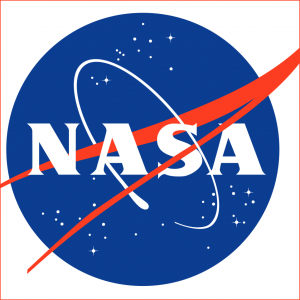NASA Selects 2 Proposed Venus Mission Concepts Co-Developed by Gilmore


Two proposed Venus mission concepts co-developed by planetary geologist Martha Gilmore were selected by NASA’s Discovery Program this week. The selected missions aim to understand how Venus became a scorching planet after it was potentially another habitable world in the solar system with an Earth-like climate.
Gilmore, George I. Seney Professor of Geology, professor of earth and environmental sciences, is a co-investigator of both winning concepts. Each project will receive approximately $500 million per mission for development and is expected to launch in the 2028–2030 timeframe.
The projects include VERITAS (Venus Emissivity, Radio Science, InSAR, Topography, and Spectroscopy) and DAVINCI+ (Deep Atmosphere Venus Investigation of Noble gases, Chemistry, and Imaging Plus).
“Venus is so critical to our understanding of how Earth-sized planets form in our solar system and other solar systems,” Gilmore said. “I can’t wait to see what we know about Venus in 20 years—will we know then that Venus was once covered in oceans? Will we know how the inner planets acquired their water inventory? Will we know how to recognize habitable planets around other stars? Will we find evidence of life there?”
VERITAS, a Venus orbiter, will create high-resolution topography imaging of Venus’s surface and produce the first maps of the planet’s global surface composition. By charting surface elevations of nearly the entire planet, scientists will be able to learn more about the geological history of the planet and why it developed so differently than Earth. VERITAS also will map infrared emissions from Venus’s surface to map its rock type and determine whether active volcanoes are releasing water vapor into the atmosphere. VERITAS is managed by NASA’s Jet Propulsion Laboratory.
DAVINCI+ is an atmospheric probe that would be managed by NASA’s Goddard Space Flight Center. As the probe plunges into Venus’s thick atmosphere, it would measure the chemical composition, revealing the possibility of a history of water on Venus. In addition, DAVINCI+ will return the first high-resolution pictures of the unique geological features on Venus known as “tesserae,” which may be comparable to Earth’s continents, and, as the oldest terrains on Venus, may record past climates. This will be the first U.S.-led mission to Venus’s atmosphere since 1978.
“Having these two such complementary missions is a dream come true,” Gilmore said. “I’m so happy and look forward to working with our students on this fascinating planet.”
According to NASA, these investigations are the final selections from four mission concepts NASA picked in February 2020 as part of the agency’s Discovery 2019 competition. Following a competitive, peer-review process, Gilmore’s missions “were chosen based on their potential scientific value and the feasibility of their development plans.” The project teams will now work to finalize their requirements, designs, and development plans.
 “We’re revving up our planetary science program with intense exploration of a world that NASA hasn’t visited in over 30 years,” said Thomas Zurbuchen, NASA’s associate administrator for science in a June 2 press release. “Using cutting-edge technologies that NASA has developed and refined over many years of missions and technology programs, we’re ushering in a new decade of Venus to understand how an Earth-like planet can become a hothouse. Our goals are profound. It is not just understanding the evolution of planets and habitability in our own solar system, but extending beyond these boundaries to exoplanets, an exciting and emerging area of research for NASA.”
“We’re revving up our planetary science program with intense exploration of a world that NASA hasn’t visited in over 30 years,” said Thomas Zurbuchen, NASA’s associate administrator for science in a June 2 press release. “Using cutting-edge technologies that NASA has developed and refined over many years of missions and technology programs, we’re ushering in a new decade of Venus to understand how an Earth-like planet can become a hothouse. Our goals are profound. It is not just understanding the evolution of planets and habitability in our own solar system, but extending beyond these boundaries to exoplanets, an exciting and emerging area of research for NASA.”
Established in 1992, NASA’s Discovery Program has supported the development and implementation of over 20 missions and instruments. These selections are part of the ninth Discovery Program competition.
Gilmore, who also is the co-coordinator of Wesleyan’s Planetary Sciences program, is a fellow of the Geological Society of America, has served on dozens of NASA and National Academy of Sciences-NRC Committees, has mentored more than 20 master’s degree recipients, has served as chair of the Wesleyan’s Department of Earth and Environmental Sciences and the Venus Exploration Analysis Group, deputy chair of VEXAG, and has a publication record of fundamental research contributions in planetary geoscience, particularly on the geological evolution of the Earth, Venus, and Mars.
In 2020, she received the Randolph W. “Bill” and Cecile T. Bromery Award from the Geological Society of America for her exemplary contributions to research in the geological sciences and for being an instrumental mentor to young people of color.
- Read more about the project in this June 2 NPR story.
- Read more about Gilmore’s research here.

